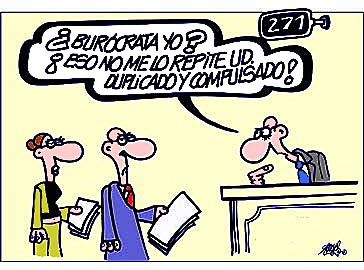Improving service and security through knowledge management at Miami Airport
By Jorge Martínez
Imagine going on a trip in Miami to go to another country. After a long journey, with tiredness in the body, when he is about to pass immigration to enter the United States, tell him that he can not pass, that he has to go to a special room where he is put under a new control , Without anyone explaining the reasons or how long it will take. Half an hour later, they call him by name, give him his passport, and tell him that he can go. Zero explanations.
Now imagine that, four days later, when you stop at the same place on your return journey, exactly the same thing happens to you. Only this time his fatigue is greater, the rows he has already had to endure are even longer, and the possibility of losing the connection flight really imminent.
Well, this happened to me a few weeks ago and, despite complaining, I never managed to get an explanation, let alone an apology. I deduce that, just like a few years ago, they confused my name and first name with that of a delinquent with an international arrest warrant. It is clear that the situation of international insecurity and the terrorist threat make it necessary to raise alert levels, especially in the United States, which is a stated objective. But at least in my case, it would have been enough to look at my second last name to save me the trouble and the US government from using resources in a useless and unnecessary task. If, along with alert levels, the effectiveness of terrorist and criminal identification systems had increased, perhaps I would be telling another story. However you can not help but wonder the following:
What is the purpose of removing the ESTA (the Electronic Travel Authorization issued by the Department of Homeland Security prior to travel and valid for 2 years). First control.
What it will be like when you arrive at the airport in Miami, for the ESTA carriers, you are forced to go directly to a machine where you must scan your passport, take a photo, take your fingerprints and make an automatic declaration. Second control.
What will it be to go through an Immigration Officer who takes you back to the picture, fingerprints and any other question about your intentions in the United States. Third control.
What good are all these controls, if finally the last link in the chain ignores all previous controls and you end up locked in a room like a delinquent? It seems incredible that after so many years traveling to the United States, and having legally resided in that country for more than three years, I continue to confuse myself with someone I am not. Something is not working well.
From the point of view of internal controls and knowledge management of the Department of Homeland Security, the high number of controls required for each “suspicious” passenger is highly inefficient (not to mention the discomfort that generates in the visitor) . This is because scarce resources (Immigration Officers, Machines) are being used to do the same job several times. But worst of all, if every time a foreigner visits the United States, several checks are necessary, many of them identical, despite having already obtained prior authorization from the Department of Homeland Security, This information is being stored, and that every time someone visits the United States it is as if they were doing it for the first time, which is wasting a lot of valuable information, that if it was stored, it would save a lot of time and money.
This reminds me very much of one of the findings of the National Commission’s report that at the request of the President and Congress of the United States, investigated the terrorist attacks of September 11 (http://www.9-11commission.gov/report /). That report indicated that another major federal security agency in the United States, the FBI, “did not have an effective intelligence-gathering effort. The collection of intelligence by human resources was limited, and the agents were not adequately trained … The FBI lacked the ability to know what it knew, there was no effective mechanism for capturing and sharing its institutional knowledge. FBI agents created records of interviews and other investigative efforts, but there were no officers to condense intelligence into meaningful intelligence that could be found and disseminated. “
These signals of inefficient controls or lack of knowledge management in public safety institutions in the most advanced country in the world remind us that beans everywhere. Have you ever lived a similar situation that could have been avoided with better knowledge management?





Leave a Reply
Want to join the discussion?Feel free to contribute!